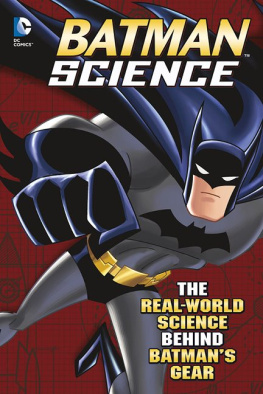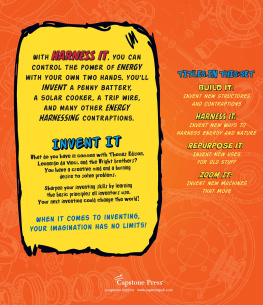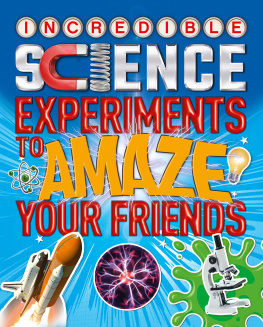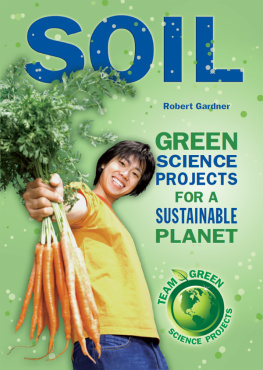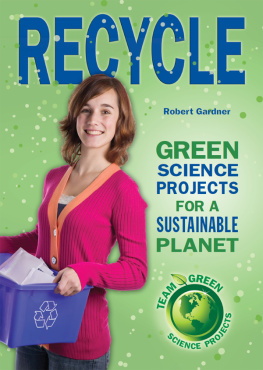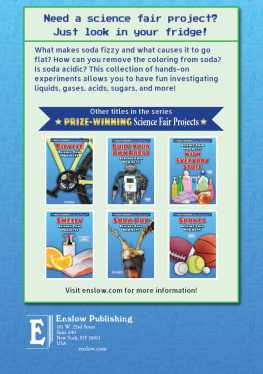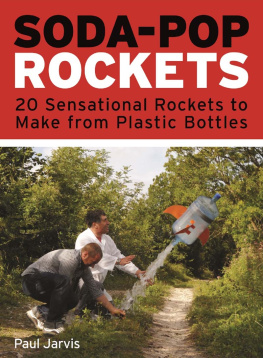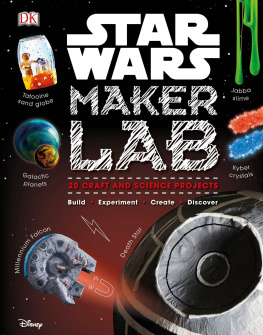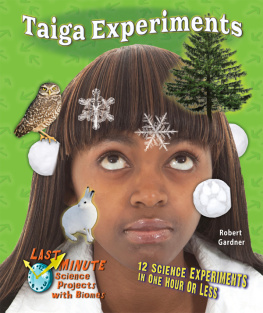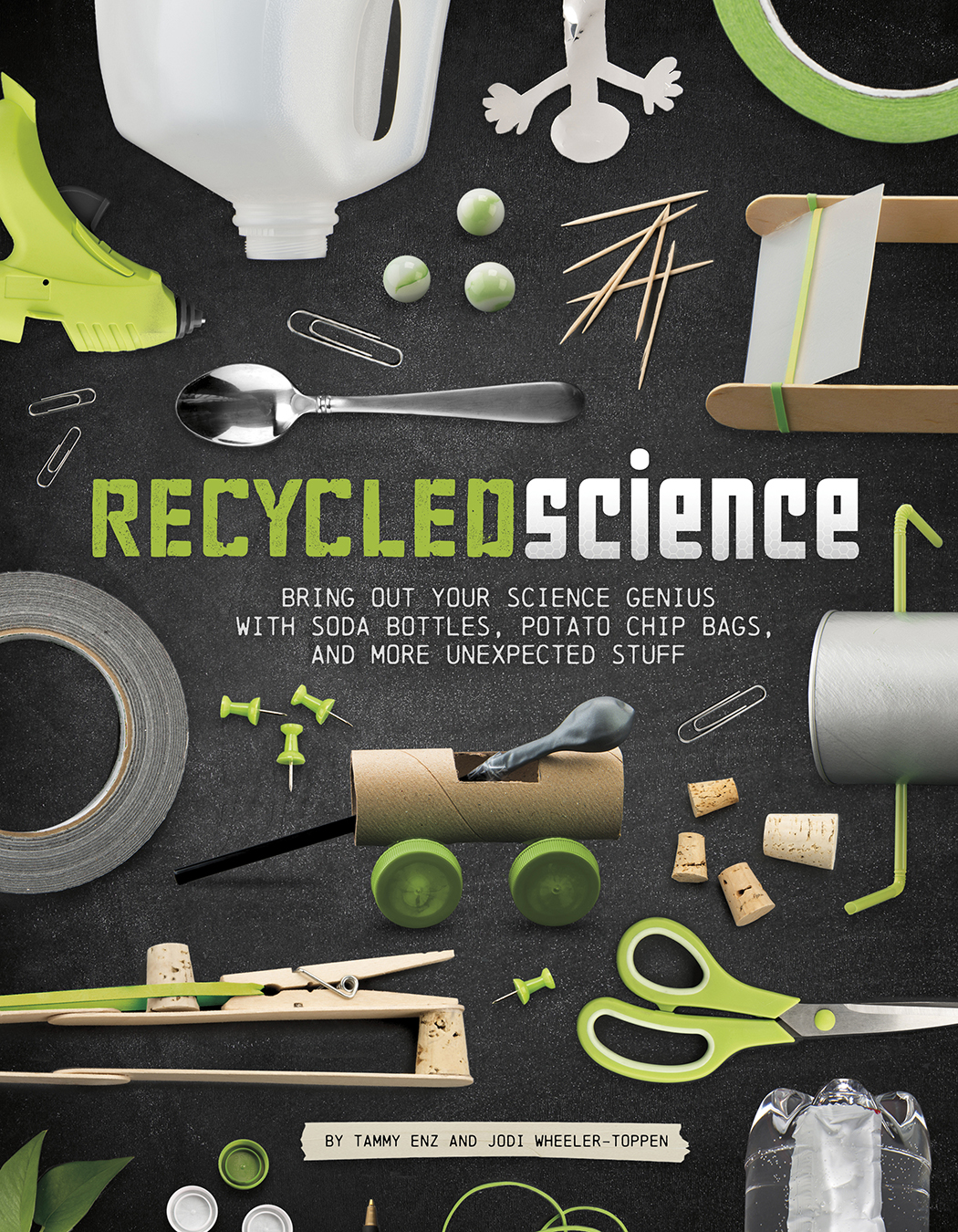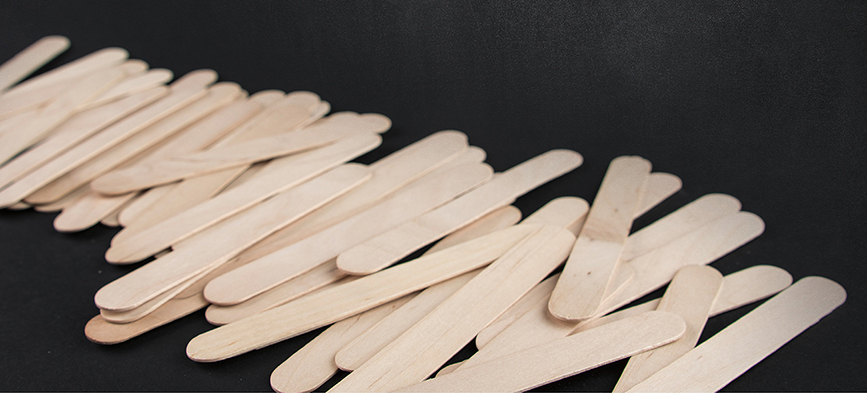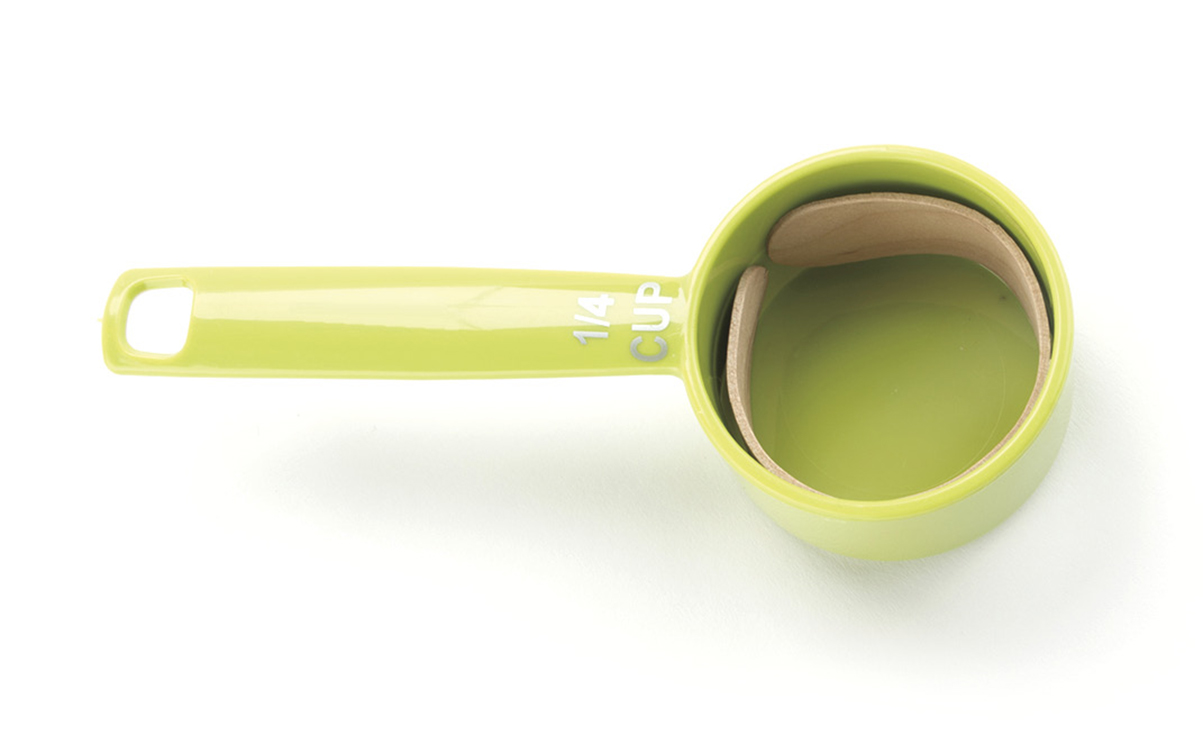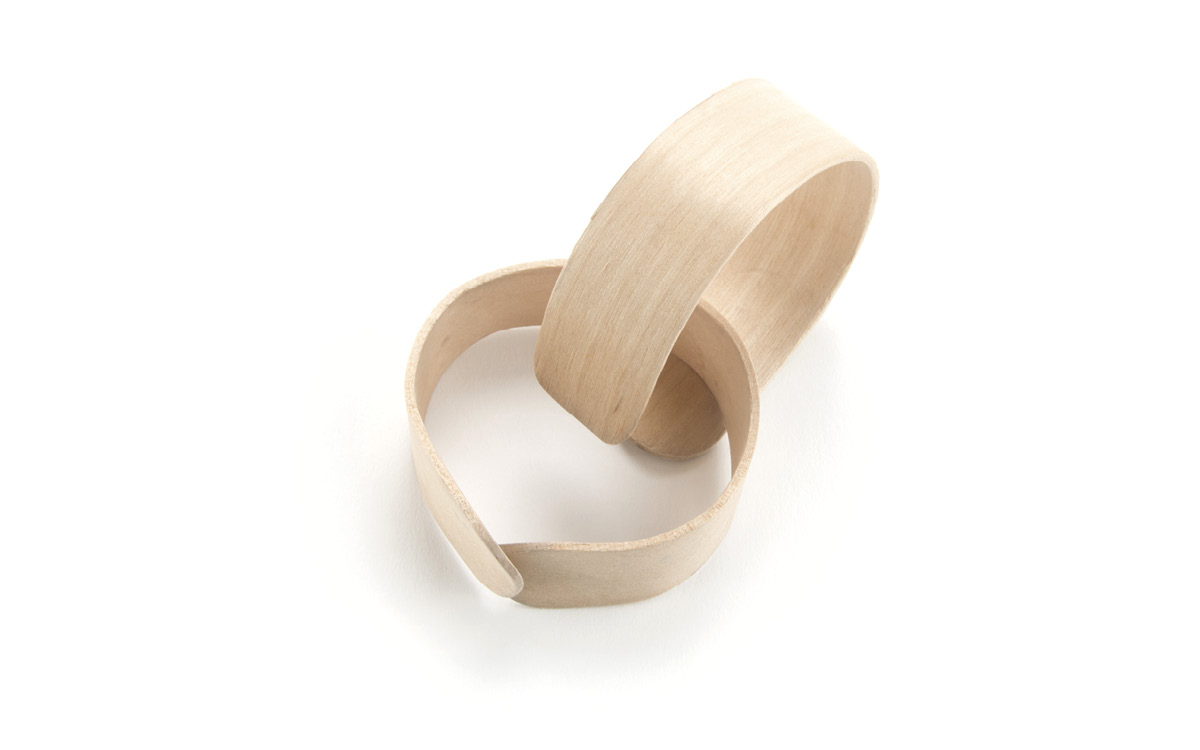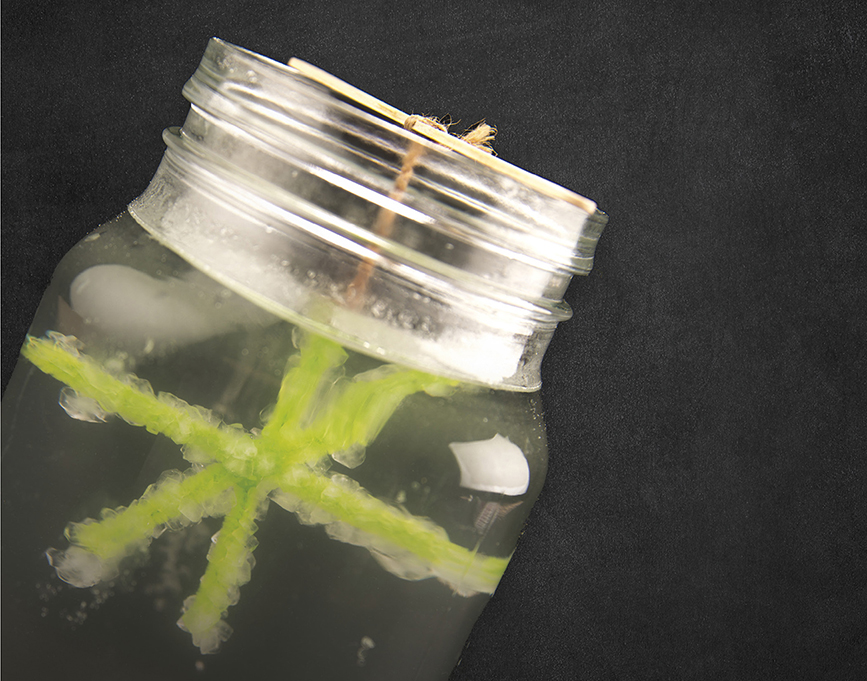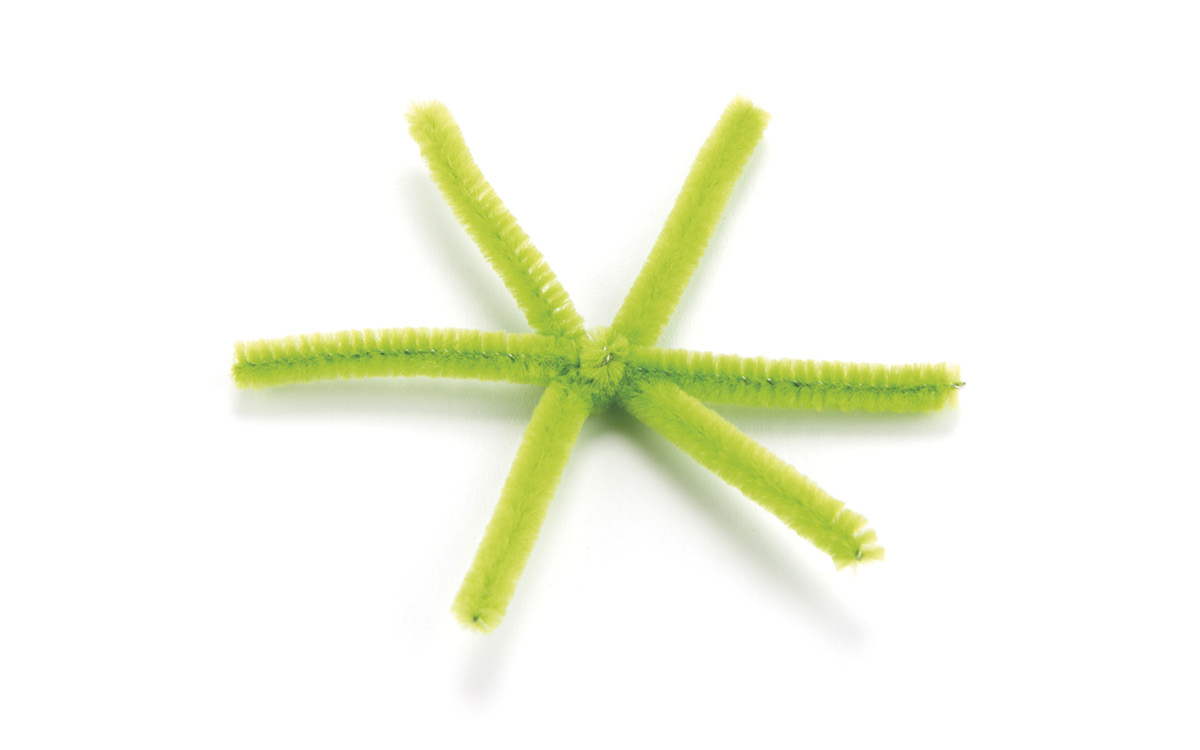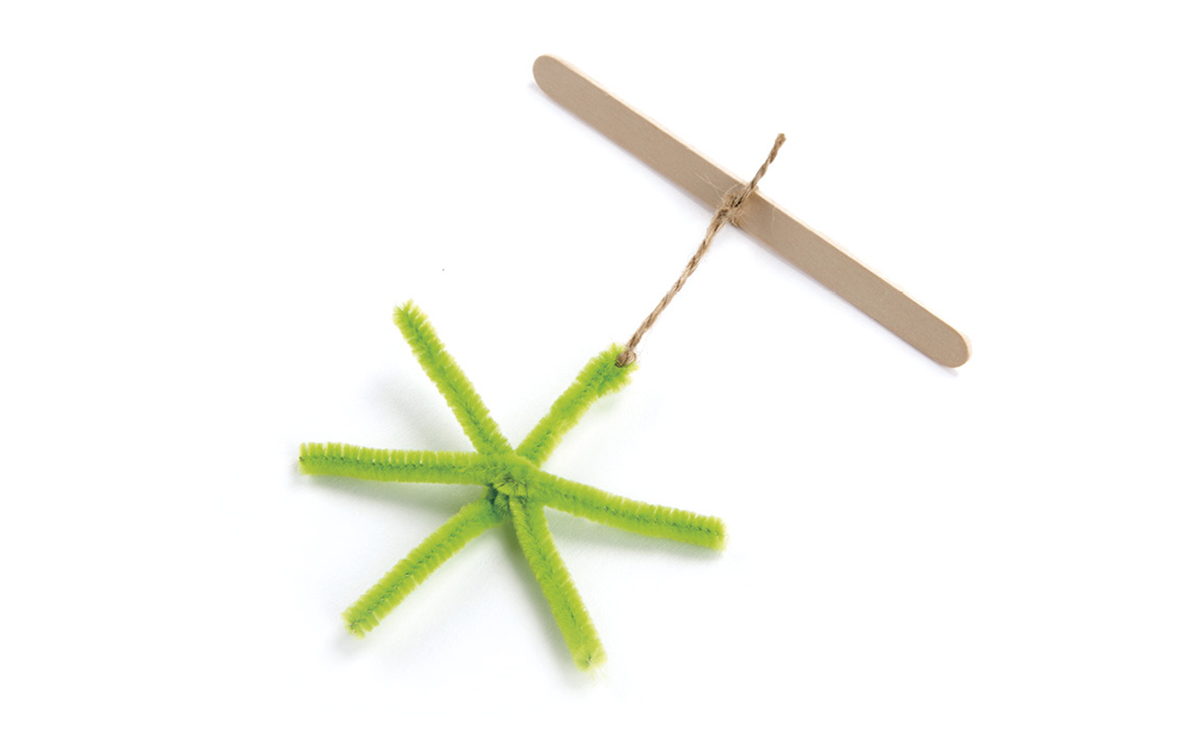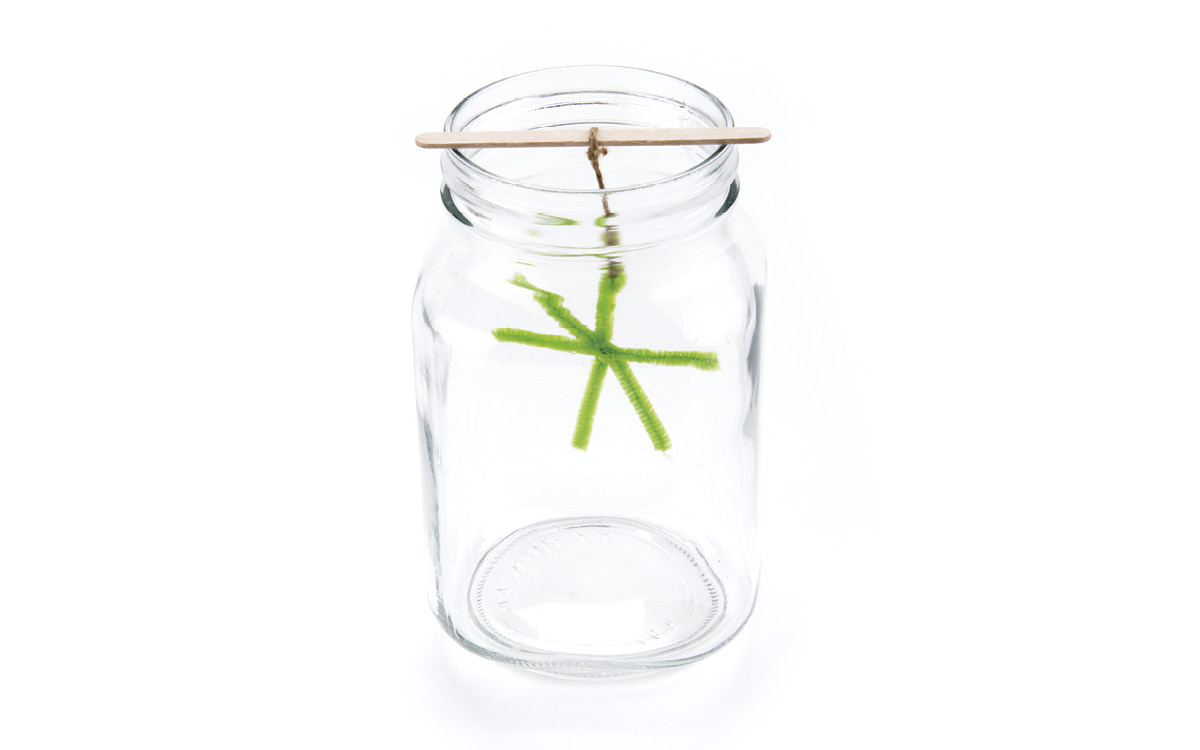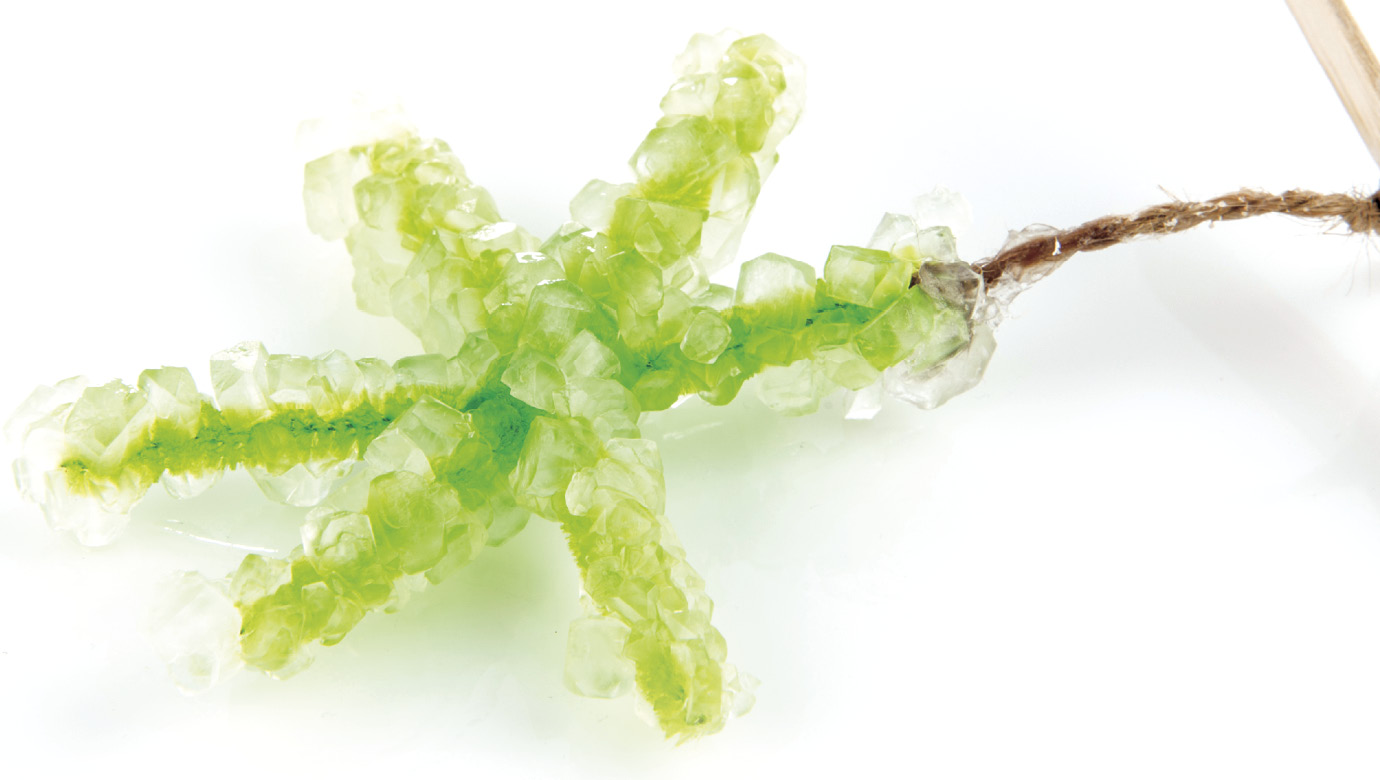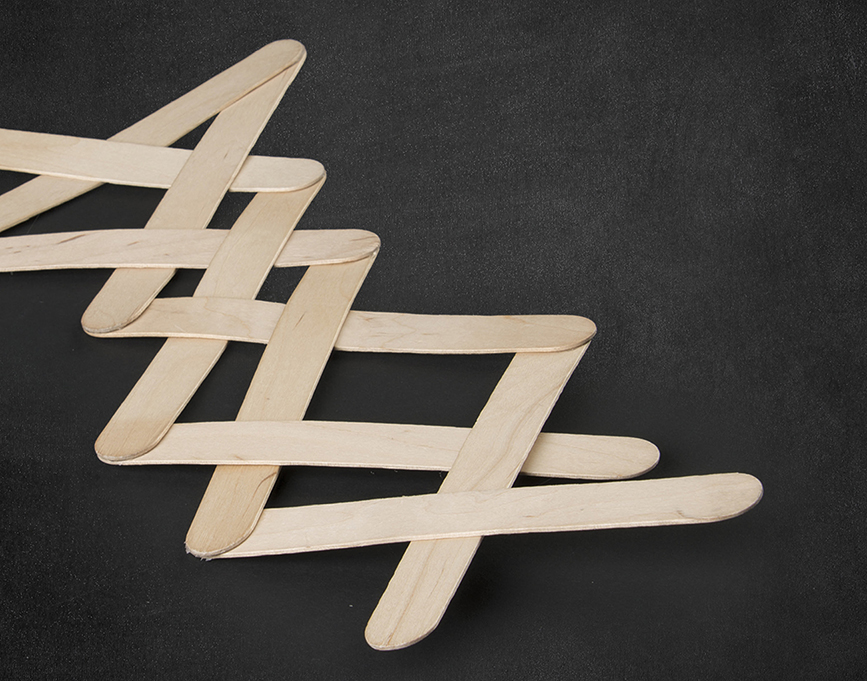CHAPTER ONE
AWESOME CRAFT STICK SCIENCE
Stick Around!
Theres nothing like a tasty snack on a stick. But when you finish smacking that snack, dont discard the stick. Repurpose it! Do more than repurpose it. Reveal science at work with awesome craft stick science projects. Their unique shape and material properties make them ideal for science projects. So eat up. Then gather some tools and get to work! (Dont forget that jumbo craft sticks make awesome projects too.)
Happy Accident
More than 2 billion Popsicles are sold each year. But did you know their invention was accidental? Eleven-year-old Frank Epperson discovered the treat in 1905. He left his sugary drink with a stir stick outside overnight. After a chilly night, he found his drink frozen into a Popsicle.
Branch of Science: Biology
Concept: Properties of Wood
WOODEN CHAIN
Did you ever wonder how curved wooden furniture is made? Usually bending a wood craft stick causes it to snap. But you can unlock the secret to bending wood with this experiment.
Youll Need:
- Slow cooker or crockpot
- Water
- 5 to 10 craft sticks
- Tongs
- 5 to 10 round cups or milk jug caps
Safety First: Have an adult help out when using a cooker.
Put It Together:
- Fill the cooker half full of water. Place the craft sticks inside. Cook for one to two hours at medium heat.
- Carefully remove a stick with tongs. Allow the stick to cool for about a minute before touching it. Slowly begin bending the stick into a circle.
- Fit the circle inside a cup. Repeat with the other sticks and cups.
- Leave the sticks inside the cups overnight. Remove them, and carefully fit the links together to form a chain.
Reusable Knowledge
Wood is a hygroscopic material. It can absorb water from its environment. The cells that make up wood have cellulose in their walls. Cellulose gives wood its strength. Dry wood is strong but brittle. Water makes cellulose soft and stretchable.
Structure of Wood
Live trees contain lots of water. Up to two-thirds of a trees weight comes from the water inside of it. The water keeps the cell walls soft, allowing the tree to bend and sway without breaking.
Branch of Science: Chemistry
Concept: Super Saturated Solution
CRYSTAL SNOWFLAKE
This chemistry experiment appears almost magical. Sparkling crystals appear overnight from clear liquid. Give it a try!
Youll Need:
- Pipe cleaner (any color)
- Scissors
- 6-inch-(15-centimeter-) long piece of string
- Craft stick
- Large drinking glass or jar
- 1.5 cups (.35 liter) boiling water
- 3 tablespoons (45 grams) of borax
- Spoon
Safety First: Have an adult help out when using hot water.
Put It Together:
- Cut the pipe cleaner into three equal length sections. Twist the pieces together at their centers. Spread out the pieces to form a six-pointed asterisk.
- Tie one end of the string around one arm of the asterisk. Tie the other end around the center of the craft stick.
- Lay the craft stick across the top of the glass, hanging the asterisk inside the jar. Adjust the string so the asterisk hangs about halfway down the jar.
- Remove the asterisk, and pour the boiling water into the jar. Slowly stir in the borax powder.
- Replace the asterisk inside the jar. Place the project somewhere it wont be disturbed. Leave it alone overnight, and observe it in the morning.
Reusable Knowledge
In this experiment you created a super saturated liquid. By heating the water, you added energy. The energy caused water molecules to speed up. They collided with borax crystals, dissolving them. Hot water dissolves more crystals than cold water. So when the water cooled, the borax crystals returned to their solid form. The pipe cleaner was an easy place for the crystals to cling.
What is Borax?
Borax is a natural mineral that dissolves easily in water. It is found in dry lake beds and has many uses. In ancient times it was used for preserving food and mummies. Ancient Chinese pottery makers used it in glazes. Today it is used in detergent and cleaning products. It is also used as a fire retardant and tooth whitener.
Branch of Science: Physics
Concept: Potential and Kinetic Energy
CHAIN REACTION
Do you like lining up dominoes just to watch them fall in a chain reaction? Then youll love this experiment. It takes a little patience and help from a friend. But it creates lots of fun and a lesson in physics.
Youll Need:
- A pile of craft sticks (jumbo ones work best)
- A friend
Safety First: Wear eye protection when working on this project.
Put It Together:
- Take four sticks and lay them on a flat surface in a square shape. Overlap their ends by about 2 inches (5 cm). Make sure one end of each stick is lapped under while its other end is lapped over adjacent sticks.
- Slide the ends of the two sticks closest to you so their ends overlap forming a V. Hold your thumb on the tip of the V and keep it there.
- Have a friend weave another stick over and under the sticks on your left side. If done correctly, the sticks will be difficult to weave, but will hold together.


